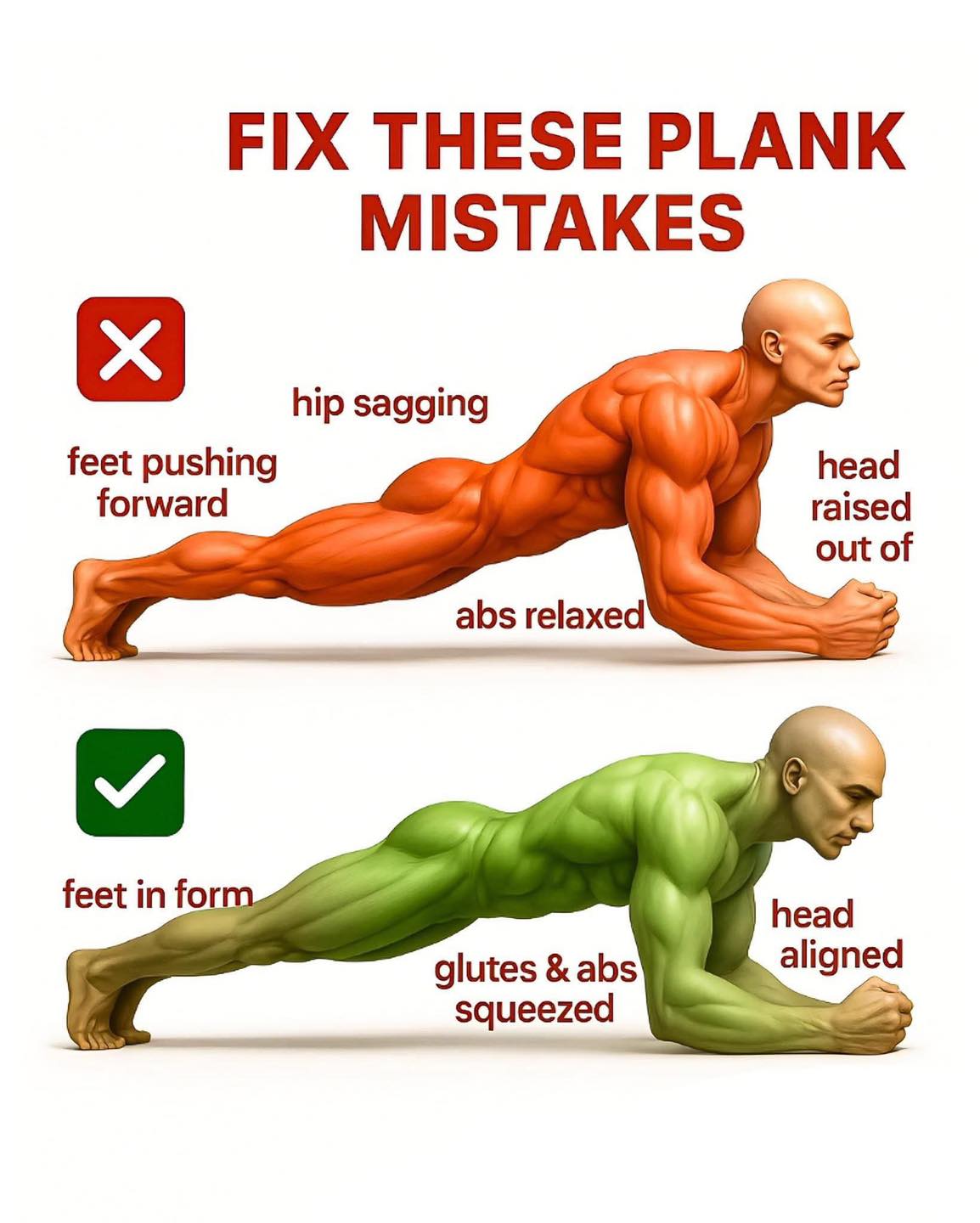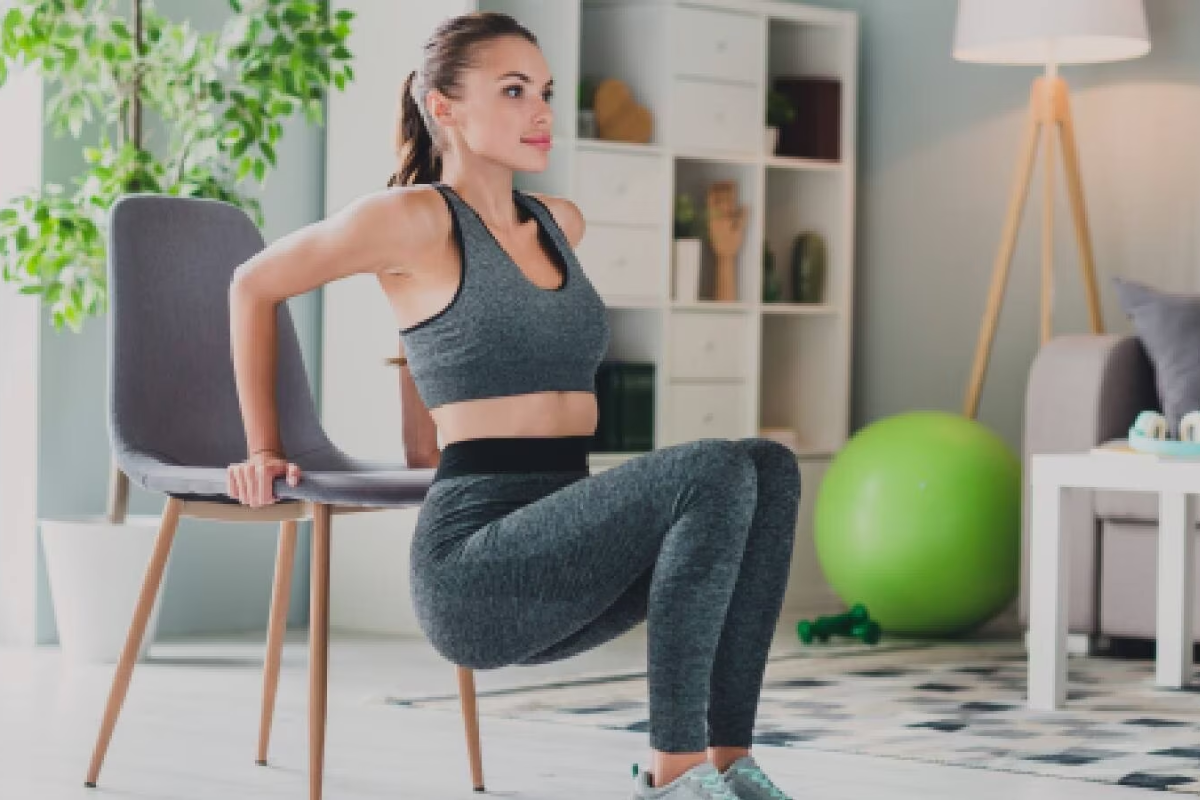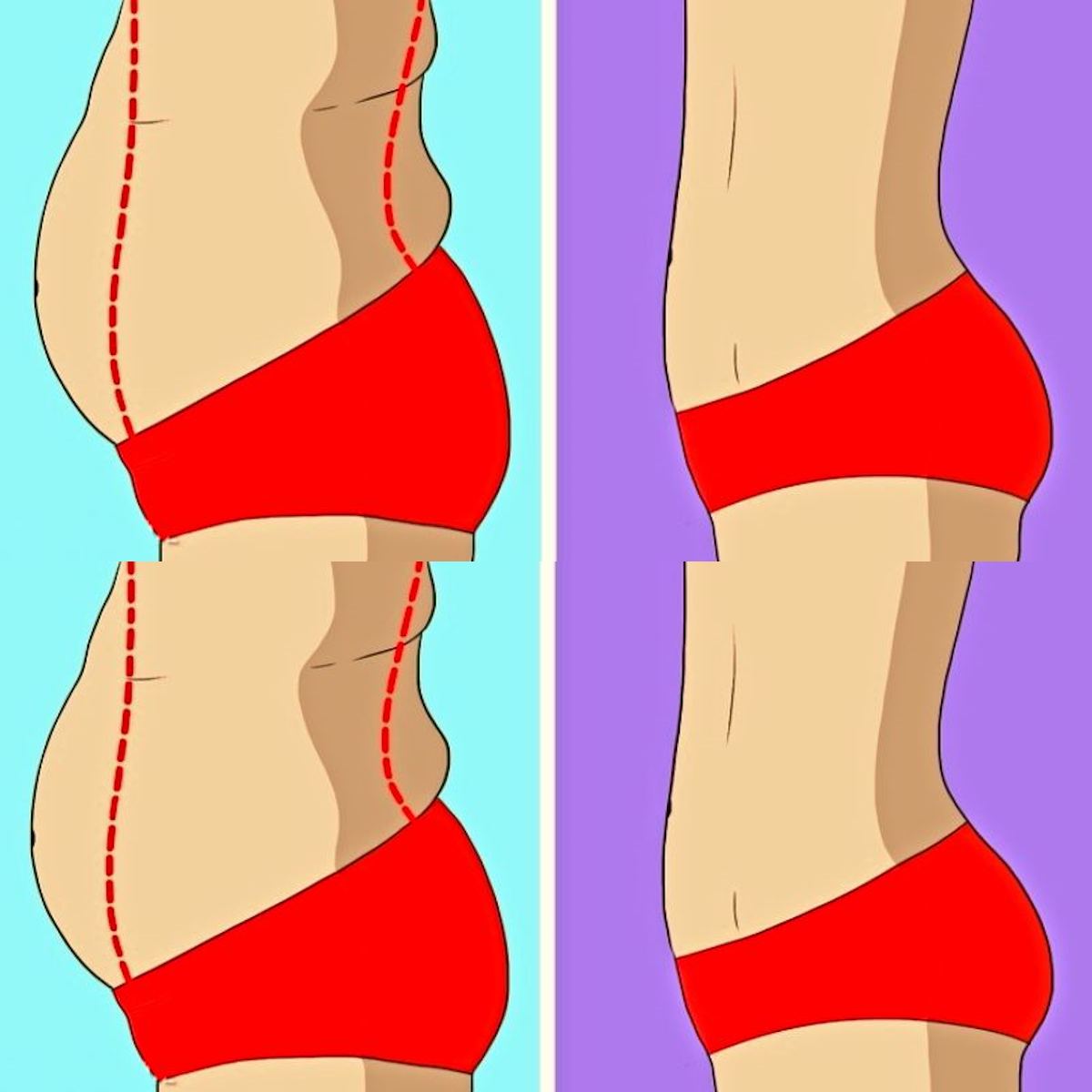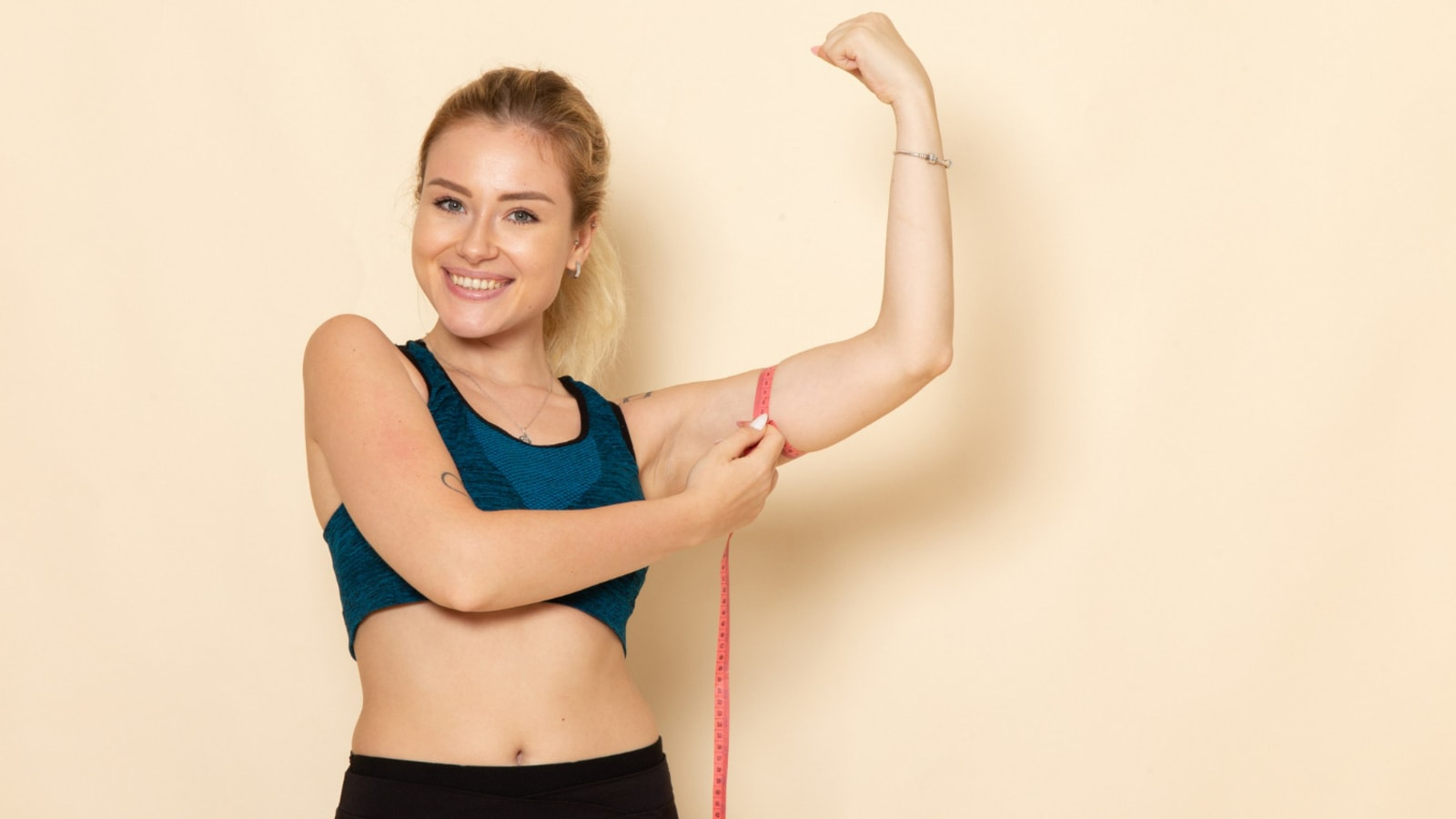
Even experienced trainers can fall into bad habits—especially when it comes to popular exercises that are often rushed or repeated without attention to form.
You might be surprised to learn that some of the most common moves you see in gyms or online workouts are being done incorrectly. And when form suffers, so does effectiveness—and worse, injury risk goes up.
Whether you’re a seasoned pro or just starting out, here are **8 widely practiced exercises that are commonly performed wrong**—and how to **fix them** for safer, stronger results.
1. Plank
The plank is one of the best core exercises out there, engaging your abs, glutes, shoulders, and back all at once. But if you’re not doing it right, you could be putting unnecessary strain on your neck and lower back instead of working your core.

Common Mistakes:
- Raising your hips too high (like a dog pose).
- Sagging your lower back.
- Looking up or sideways instead of down.

How to Fix It:
- Place your elbows directly under your shoulders.
- Keep your body in a straight line from head to heels.
- Engage your core and glutes, and keep your gaze slightly ahead or downward to maintain proper neck alignment.
2. Tricep Dips
Dips are great for building strong arms and chest, but they’re often done with poor technique that puts pressure on the shoulders instead of the triceps.

Common Mistakes:
- Letting your elbows flare out to the sides.
- Slouching your back as you lower yourself.
How to Fix It:

- Set up with hands shoulder-width apart on a stable bench or chair.
- Extend legs forward with heels on the floor.
- Lower slowly until your elbows form a 90-degree angle.
- Keep your back close to the bench and elbows tucked in—not splayed out.
3. Crunches
Crunches seem simple, but many people perform them in a way that actually takes tension off the abs and places it on the neck or hip flexors.

Common Mistakes:
- Lifting too high, which engages the hip muscles instead of the core.
- Pulling on the neck or placing hands behind the head with force.
- Holding legs down for extra stability (which shifts focus away from the abs).

How to Fix It:
- Lie flat on your back with knees bent and feet on the floor.
- Cross your arms over your chest or gently behind your head.
- Contract your abdominal muscles to lift your shoulders 6–9 inches off the ground.
- Move slowly—control matters more than speed or height.
4. Push-Ups (Easier Versions)
Push-ups—or their lighter variations—are great for building upper body strength. But even slight errors in form can turn them into a back or shoulder pain trigger.

Common Mistakes:
- Arching or sagging the lower back.
- Flaring elbows wide, increasing stress on the shoulders.

How to Fix It:
- Place hands slightly wider than shoulder-width apart.
- Keep your body aligned like a straight board—don’t let your hips drop.
- Tuck your elbows at about a 45-degree angle during descent.
- For an easier version, do push-ups on your knees or against a wall.
5. Squats
Squats are a foundational movement, but incorrect form can lead to joint strain and improper muscle activation.

Common Mistakes:
- Knees not tracking over toes.
- Leaning too far forward or letting knees extend too far past the toes.
- Looking up, which throws off balance and strains the neck.

How to Fix It:
- Stand tall with feet shoulder-width apart.
- Keep your chest up and back straight as you bend your knees and lower into a squat.
- Make sure your knees point the same direction as your toes.
- Go low enough so your hips are parallel to the floor.
- Keep your eyes looking forward—not up or down.
A lot depends on the depth of the squat and the width of the legs’ position.
It’s correct to squat until the hips are parallel to the floor. With incomplete squats, the thigh muscles are poorly engaged, and with squats that are too deep, the knees get overloaded.
The wider apart you place your legs, the more you load the muscles of the inner thighs and the buttocks.
6. Lunges
Lunges are a powerful move for building leg and glute strength—but only if done correctly. Too often, people end up straining their knees instead of engaging their thighs and butt.

Common Mistakes:
- Front knee extending too far past the toes.
- Leaning forward too much, putting extra pressure on the front knee.
- Back knee hitting the ground too hard or at a bad angle.

How to Fix It:
- Step forward with a big lunge stance, planting your heel firmly.
- Lower your body until your front thigh is parallel to the floor.
- Keep your torso upright and core engaged.
- Push through your front heel to return to standing.
7. Side Lunges
Side lunges are excellent for targeting inner thighs and glutes, but improper form can put stress on your knees and reduce effectiveness.

Common Mistakes:
- Not fully touching the floor with the extended leg.
- Allowing the knee to cave inward.
- Leaning forward instead of staying upright.

How to Fix It:
- Step wide to one side and shift your weight back into the supporting leg.
- Keep both feet planted and facing forward.
- Lower until your thigh is almost parallel to the floor.
- Maintain a straight back and keep your knee aligned over your foot.
8. Superman / “Boat Exercise” (Back Extension)
This move is often used to strengthen the lower back and improve posture—but it’s frequently done with poor control, leading to minimal gains and possible discomfort.

Common Mistakes:
- Pressing knees into the floor instead of lifting arms and legs.
- Bending limbs too much, reducing engagement in the back muscles.

How to Fix It:
- Lie face down with arms and legs fully extended.
- Tighten your glutes and lower back muscles.
- Simultaneously lift your arms, chest, and legs off the ground.
- Hold for a second, then lower slowly with control.
So whether you’re a beginner or an instructor, by focusing on proper form, you’ll not only avoid injury—you’ll also get better results, faster progress, and improved body awareness.
So next time you go through your workout routine, slow down and check your form. Your future self will thank you!




